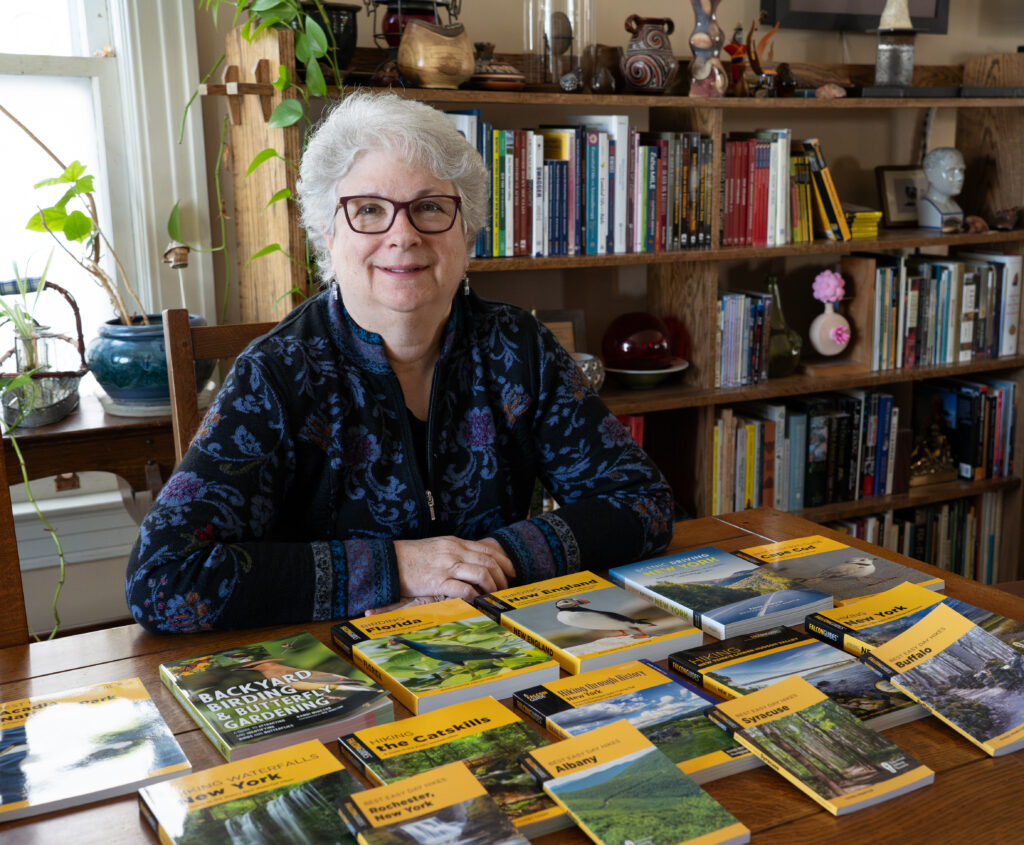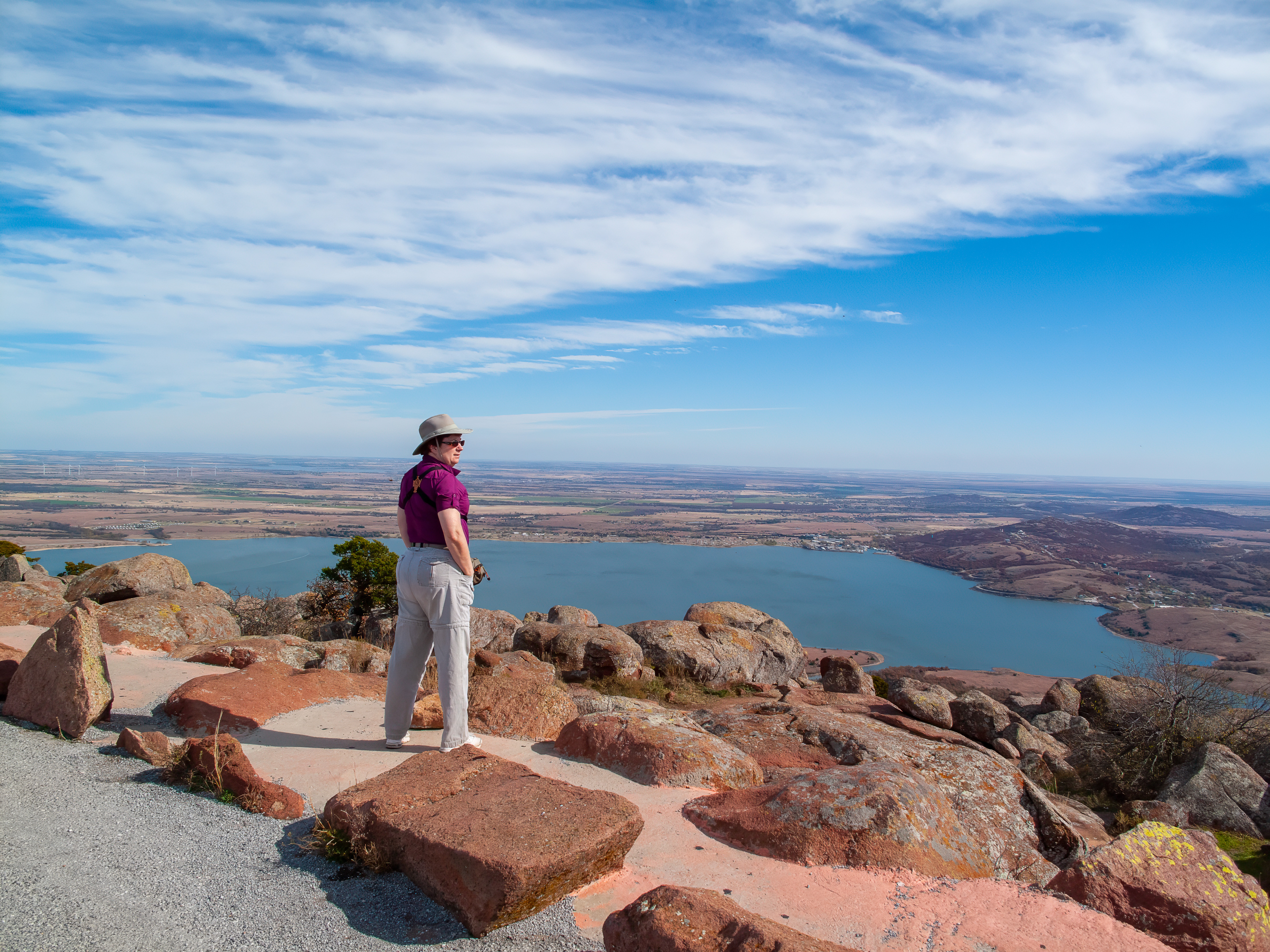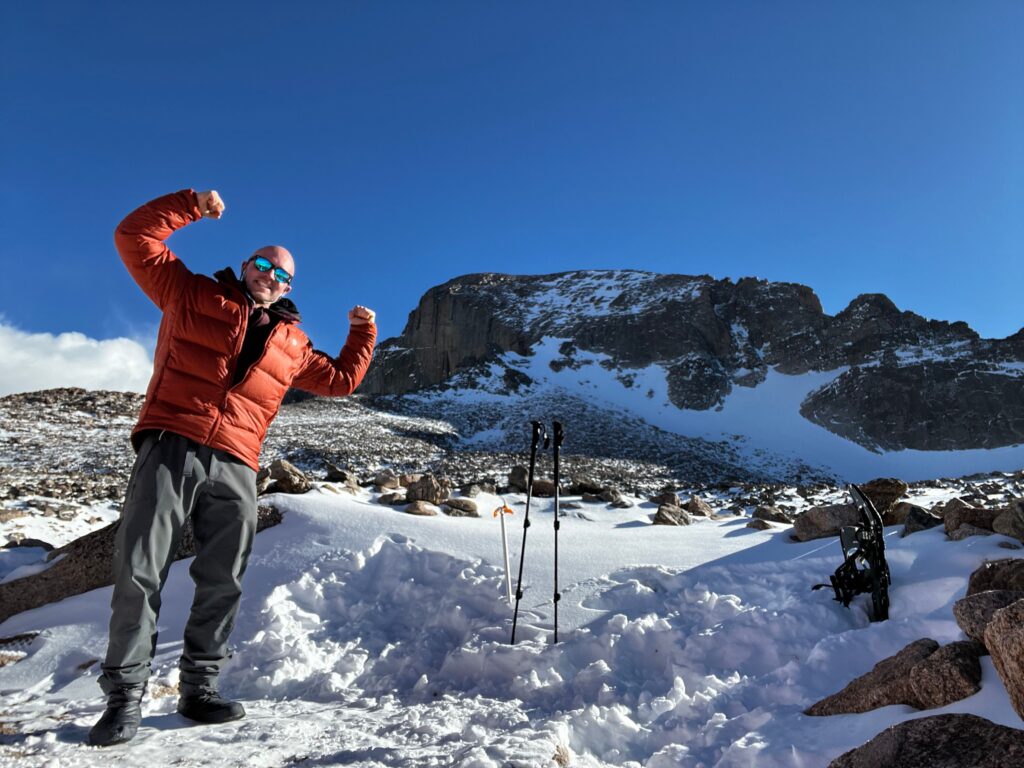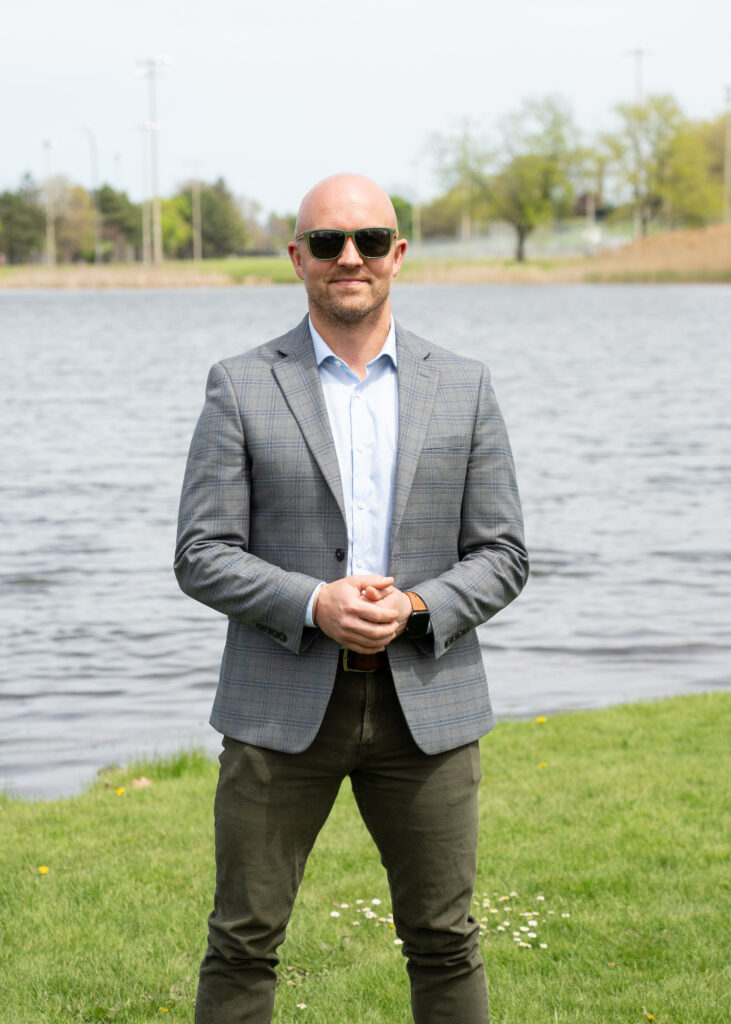
Ben VanderStouw— “Connection”
A skilled rock climber and ice climber, Ben VanderStouw has immersed himself in the sport for nearly a decade. He’s traveled the country climbing in states such as Utah, Nevada, and California and has even climbed internationally. Trail running, mountain biking, woodcarving, and mushroom hunting also draw VanderStouw to the outdoors, but the main pull for him is connection.
“My dad told me stories of climbing in the Teton Range in Wyoming and in the Shawangunk Mountains (“Gunks”) of New York. It sounded like a storybook adventure the way he made his way across the glacier, climbed up the Grand Teton, dealt with inclement weather, and returned safely. I was always interested in adventure, but access to rock in the Rochester area is difficult given that the bedrock is shale and too soft to climb safely. However, much of New York has some truly fantastic rock and ice climbing.
“The two big epicenters in New York are New Paltz and Keene Valley. New Paltz is the home of the Gunks, a world-class climbing area steeped in history and traditional ethics. The Adirondacks are another huge climbing area. Keene Valley acts as the gateway to the High Peaks Region, which has a ton of quality rock and ice climbing.
“When I moved to Syracuse for college, I had the opportunity to travel to the Adirondacks and Gunks to learn how to trad [traditional] climb. I focused on rope skills, placing protection, and learning how the gear worked. The gear is important to get right—if you don’t pace it well, it might not hold a fall.
“A favorite trip that comes to mind is climbing at Moss Cliff with Don Mellor. He wrote the guidebook my father carried with him when venturing to the Adirondacks in the 1990s, so it was a bit of a full-circle moment. Moss Cliff houses some of the best climbing in the state. It has long routes that need to be broken up into multiple pitches and high-quality rock, and needs to be accessed by a tyrolean traverse (think a horizontal zipline) across a river.
“In my earlier climbing I focused more on the technical skills and less on the fitness component. If you want to have big adventures, you really need to be fit enough to do it, knowledgeable enough to go through the logistics, and, most importantly, know how to get yourself out of trouble if you make a mistake. I have been able to climb across the country learning from sandstone towers in Utah, granite boulders in Joshua Tree, sport climbing in Red Rock Canyon, Nevada, climbing long routes in Yosemite, and plenty of great climbs here in the Northeast. Internationally, I have climbed limestone routes in El Potrero Chico, Mexico, and, most recently, alpine climbing with good friends in the Chaltén (Fitz Roy) Massif in Patagonia, Argentina. Spending quality, thoughtful time with my climbing partners, the natural world, and myself are all important in creating worthwhile experiences. Without these ways to connect, it wouldn’t have the same magic and allure.”
Rochester has a few rock gyms with experienced staff that are great places to start learning technique—RocVentures Climbing, Central Rock Gym, and Red Barn Climbing Gym.




Randi Minetor—“Splendor”
Any outdoors lover is sure to know the yellow-bordered field guides lining Barnes & Noble’s shelves—Best Easy Day Hikes Rochester, NY, Hiking Waterfalls New York, and Birding New England are just a few of the ninety-five books Randi Minetor has written. Minetor and her husband, Nic, who does all the photography for the guides, have visited fifty states on their quest to take in all 429 National Park Sites. An avid hiker, the president of the Rochester Birding Association (RBA), and a lifelong explorer, Minetor goes outside for splendor.
“You feel everything in your body calm down when you take those first steps into a wilderness area or on a trail—it’s the perfect antidote to a frustrating day; it keeps you sane.
“The only thing I ever intended to do with my life was write. I spent seven years working in an office without a window, and one morning I realized I wasn’t doing what I wanted. So, I quit and went into business for myself and had a book underway at that point. But what I really wanted was to be a travel writer.
For our honeymoon, Nic and I drove through Yellowstone, Grand Tetons, and the Badlands, and I was totally hooked on the National Parks. I proposed a book series to a publisher, and once I finished that, they came back to me and said, ‘we have this other series; would you like to be involved?’ and I’ve been writing for Rowman and Littlefield ever since.
“Rochester has an incredible wealth of trails that crisscross and meet up with one another. You can hike for miles through Webster Park, Whiting Road Nature Preserve, and Gosnell Big Woods. The Erie Canalway Trail hooks up with the Genesee Valley Greenway Trail and the Genesee Riverway Trail. I love Four Mile Creek in Webster and the Crescent Trails in Perinton; there are so many beautiful parks too—Ellison Park, Black Creek Park, Tryon Park.
“Outside of Rochester, most of my favorite trails are in the Catskills. NorthSouth Lake Campground has extraordinary views, and Kaaterskill Falls is the tallest waterfall in the state. I also love Watkins Glen.
“Nic got me involved with birding, and I met people from the RBA, and they sucked me in. I loved it so much I had to make it part of my career.
“RBA does more than fifty field trips a year that are all free and open to the public. You just have to show up and bring binoculars. We also have membership meetings once a month with speakers, often from Cornell Laboratory of Ornithology, and we host social events, like Birds and Brews. Everything is free, but you can also join for $25 a year to help make it all happen.
Rochester is a very important position in birding, especially during migration. Budding up to Lake Ontario, hundreds of bird species stop here before they fly across the lake to their breeding grounds closer to the Arctic Circle.”
The Minetors’ books can be found online at Barnes and Nobles, Amazon, and REI, or on their website, minetor.com. They have two books coming out September 2: Birding Texas and The Complete Language of Birds.






Eric Eveland—“Peace”
Taking adventure to the extreme, Eric Eveland competes in triathlons and spends days on end backpacking in the Adirondack Mountains. Sound intense? Add in the climate—he thrives in the below-freezing temperatures of winter. Eveland goes outside for peace.
“Anytime I can be outdoors and get some fresh air I’m getting a little bit of a checkout from reality. It’s a lot of pushing yourself: what can your body do? It can do so much.
“Drugs and alcohol were a huge part of my life. About ten years ago, I hit rock bottom and had a bit of a wake-up call. I started running just a mile here and there; then I did my first 5K which motivated me to do more. And then it became five miles, then ten, then hiking, then climbing mountains—I got hooked. I wouldn’t take back any of it. I think everybody’s past experiences mold them into who they are today. You find out how resilient your body is and how you can do a lot of amazing things if you put your mind to it.
“I’ve been lucky to find some camaraderie along the way, primarily with the Rochester Area Triathletes. They’re a great group of people that are committed to the triathlon scene. Being able to train with top-notch athletes . . . I’m nowhere near their caliber, but I try to keep up with them. They’re my motivation.
“I do all my hiking in the Adirondacks solo. It’s my time to disconnect from the world. The silence helps recalibrate my brain. I would often see how long I could stay out there, bringing enough food and staying out for ten days at a time. But how could I take it a step further? Adding snow was the answer, and mountaineering was where I really found my love for hiking. I found it in the extremes— heavy snow falls, temperatures below zero; that’s the environment I thrive in.
“However, the journey starts with the first step. Start with something simple. Walk around your neighborhood, then try to walk for an hour, for two hours. Mendon Ponds is a great training ground; it’s where I do most of my training for all my triathlons and winter mountaineering. There are probably fifty miles of trails, and it’s the perfect ground to get your feet accustomed to the varied terrain.
“If you want to take the next step, the Adirondacks are one of the most beautiful places in America and right in our backyard. You don’t need to climb a 4,000-foot mountain to find an awesome view. Mt. Jo is one of the most beautiful places—I got married up there—it’s a short, one-mile hike and a little challenging at times but achievable. Indian Head is breathtaking as well. While a little longer, it’s not a technical hike and is very gradual all the way up.
“A healthy activity like hiking is probably one of the best things for your body mentally and physically. Getting outside, walking around, and hiking is probably one of the easiest and most useful tools you have, and it doesn’t cost a penny. Anybody can do it.”


Ellen Boettrich—“Health”
From never participating in sports, to discovering them in retirement, Ellen Boettrich has competed in more than sixty triathlons, and, at age seventy-four, she isn’t stopping anytime soon. Ellen gets outside for her health.
“I want to stay healthy and see my grandchildren grow up. I took triathlons up as a retirement hobby and now move better and am stronger than I was in my late fifties. I really do feel a difference. I don’t feel at all like I’m in my seventies.
“I graduated from high school in 1967. There were no sports for girls except cheerleading. I really didn’t do any sports until probably age fifty-four when I got a bike, and I hadn’t biked since I was kid. I rejoined the YMCA, and they told me about an indoor triathlon to benefit the YMCA Invest in Youth program. I had been riding my bike, but I hadn’t swum in forty-eight years, and I hadn’t run ever. But it was for a good cause, so, I signed up.
“I needed to refresh my swimming, so I started taking adult swim lessons at the YMCA, and I signed up for the Fleet Feet learn-to-run program. They train you from no running up to a 5k. I did the Finger Lakes Triathlon, and I just kept going, working my way up to Half Ironman distance.
“The beauty of it for me is the cross-training. It’s really healthy. You’re always switching sports, and mentally it makes it more interesting too. I biked yesterday, today I’m running and swimming, and tomorrow I’ll be biking and strength training. The variety keeps me interested.
“There are a lot of local options—there’s the Finger Lakes Triathlon, Keuka Lake Triathlon, Peasantman, Silver Serpent Triathlon in Perry, and the Rochester Tri. I’ve traveled for my Half Irons because those tend to be spread out. Muscleman in Geneva is a good local one.
“It’s hard to train [for] a lot of running without getting injured, especially for people my age. I’ve been working with Mike Baxter as my coach through his program Drop-ins for Drop-outs, and the way he trains is you build most of your fitness through the swim, bike, and then a strength program. It’s very light on the running because of the injury potential.
“Rochester Area Triathletes are a great resource, they run workouts year-round. Medved, Fleet Feet, and Rochester Running Company have group runs on Saturdays. Connecting with others is a great way to get into running. Kershaw Park in Canandaigua is another great option for open-water swimming because you can stand up the whole way along the buoy line. If you’ve never swum, I’d find a coach that can teach you the basics. Mike’s program is a great option for both beginners and more experienced. There’s a huge local community.”
Views: 15




